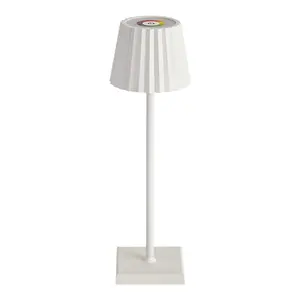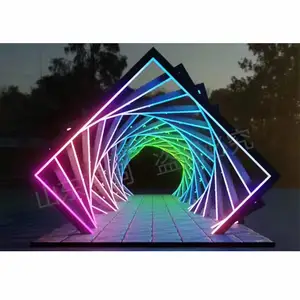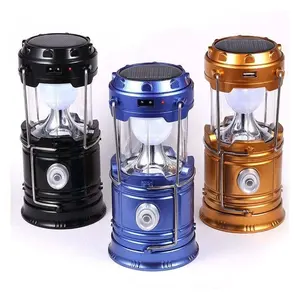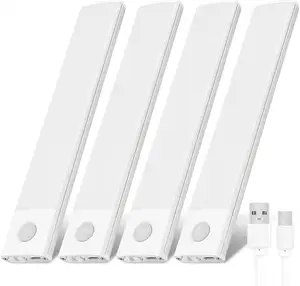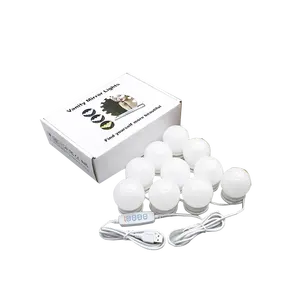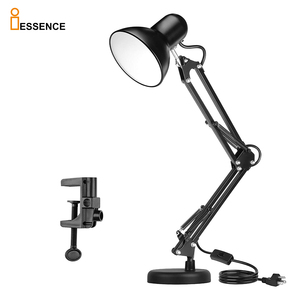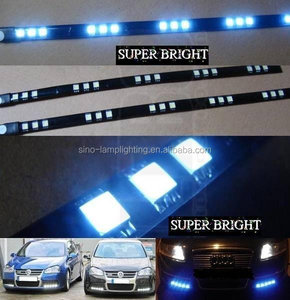Popular in your industry



















































Related Searches:
































































































































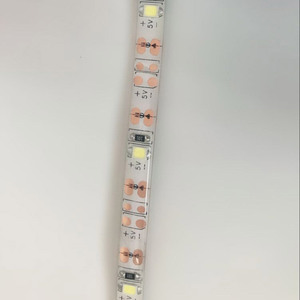


Top categories
About battery powered light strip
Introduction
Welcome to our comprehensive guide on battery-powered light strips, a versatile and portable lighting solution that can illuminate your life in a myriad of ways. In this guide, we delve into the different types of light strips, their features, and how to choose the right one for your needs. We also provide insights into the installation process, usage, and maintenance of these innovative lighting solutions. Whether you're looking for a simple lighting solution or a smart, customizable option, this guide will help you navigate the world of battery-powered light strips.
Understanding Battery Powered Light Strips
Battery powered LED strip lights offer a versatile and portable lighting solution. They can be powered by various types of batteries, including AA batteries, coin cell batteries, rechargeable batteries, and even car batteries. The key is to match the voltage of the strip to the battery. For instance, a 3-meter strip can last around 20 hours if connected to 8 AA batteries. The batteries can be connected in series to achieve the required voltage. This flexibility allows you to use LED strips in locations without access to a power source.
Types of Battery Powered Light Strips
Battery powered light strips come in two main types: Standard Density and High Density. The standard density strip holds 15 LEDs, emitting about 225 Lumens, while the high-density version holds 30 LEDs, emitting around 450 Lumens. These strips are available in various colors including Warm White, Neutral White, Cool White, and RGB (color changing). Red, Green, Blue, and Yellow are only offered in Standard Density. These strips are flexible, can be cut to size, and are powered by an 8AA battery pack, making them perfect for a variety of applications.
LED Light Strips
LED strip lights are a versatile lighting solution that can be used in various settings. These lights can be powered by batteries and offer different mounting methods like adhesive or screw-in brackets. They also provide various light modes including RGBW, white, and flash. The power source can be battery-operated or USB. The color temperature can be color-changing, bright white, or warm white. Control types include motion and remote. Depending on your needs, you can choose between dry rated or damp rated lights. The voltage can be 5 or 12 volts, and the watt equivalence can range from less than 15 to 30. The lumens can be less than 250, between 250 and 500, or greater than 3000.
RGB Light Strips
RGB Light Strips are battery-powered LED lights that offer a wide range of color options. With 20 different colors and dynamic modes, these strips can meet any of your lighting expectations. They are powered by 3 AA batteries, making them portable and ideal for areas without access to outlets or a USB port. The strips come with a mini controller, allowing for smooth and easy control of the lights. Please note, if the lights stick to one color or dim, it may be due to low battery power.
Smart Light Strips
Smart light strips have revolutionized home lighting, offering customizable and vibrant colors. They offer a variety of features, including the ability to trim to desired lengths, dimming options, and compatibility with various smart home ecosystems. Some even sync with music, creating a dynamic lighting experience. However, it's important to note that these strips often require a stable power source and may not be battery-powered.
How to Choose the Right Battery Powered Light Strips
Choosing the right battery-powered LED light strip can be confusing due to the multitude of options available. Factors affecting your choice include the length of the strip, which can often be adjusted by cutting, and the number of LEDs on the strip, affecting illumination levels. Some strips offer advanced features like dimmable lighting and timers for automatic on/off. Waterproofing is another important consideration, especially for outdoor applications. Lastly, consider the power source; most strips work with AA batteries easily found in the market.
Brightness and Color
Brightness and color are crucial aspects of battery powered light strips. Using different LEDs and specific power supplies, the brightness can be adjusted to fit any occasion. The right color choice can help create the desired atmosphere, with LED strip lights customizable to any preferred color. Color temperature, ranging from 2000k~6500k, can give a different feeling even in the same environment. Higher CRI (Color Rendering Index) ensures a clearer, more accurate, and vivid visual experience. Custom high CRI (80+) strip lights can make your environment as vivid as possible.
Battery Life and Power
Battery-powered LED strips offer a portable and reliable lighting solution. Different types of batteries can be used, including Lithium Polymer (Lipo) batteries, which are ideal due to their high current draw. Batteries come in various amperages and voltages, with each cell representing the battery's voltage. For instance, a 3S battery will have 11.1 Volts at nominal voltage. When fully charged, a 3 cell battery can rise up to 12.6 volts, enough to power an LED strip rated at 12 V DC. The battery's run time depends on factors like the LED strip type and the battery pack's milliamp hours.
Length and Flexibility
When it comes to the length and flexibility of battery-powered light strips, options abound. For instance, some brands offer a 9.8 ft. battery-operated LED strip light that is dimmable and linkable, providing both versatility and ample length. Other brands provide a 6.5 ft. LED strip light that is multi-color/multi-white and motion-activated. Lastly, there are options for a 9.8 ft. motion-activated LED strip light designed for under cabinet lighting. These lengths offer flexibility for various applications, whether you need to illuminate a small space or a larger area.
Installation and Usage of Battery Powered Light Strips
Battery powered LED strip lights can be easily installed in places where wiring is difficult. To power these lights, you can use three types of batteries: 1.5V AA batteries, 3.7V rechargeable batteries, or a DC12V battery. The connection process is simple: connect the positive and negative ends of the LED strip light to the corresponding ends of the battery. For RGB strip lights, connect the RGB controller to the battery and then to the strip light. If you're using these lights in a car, ensure you correctly identify the positive and negative wires from the car battery.
Preparation
Before installing your battery powered light strips, choose the location and measure the surface. The lights are adjustable, so you can custom fit them to different lengths. Next, prepare the surface by wiping it down to remove any oils or debris. The strip light adhesive is strong and could damage surfaces if removed, so consider using a double-sided adhesive for flexibility. Remember, it's crucial to ensure an outlet is nearby to power your strip lights, or opt for wireless LED strip lights for a cleaner look.
Installation Process
To power LED strip lights with a battery, first ensure the strip light and battery have matching voltages. Connect the positive end of the LED strip light to the positive end of the battery, and do the same for the negative ends. For RGB strip lights, connect the RGB controller to the battery, then connect the RGB LED strip light to the controller output. It's recommended to use a switch between the strip light and battery for easy power control. Always remember to check the battery every 6 months to prevent damage from chemical leakage.
Maintenance and Safety Tips
LED strip lights, including battery-powered variants, are generally safe when used correctly. However, it's crucial to mind the power connection, monitor connection distances, and ensure adequate ventilation. Regular inspection for signs of wear, damage, or exposed wires is also essential. If your LED strip supports cutting, only do so at the designated cut line. These precautions help ensure the reliable and continuous operation of your battery-powered LED strip lights.
Cleaning and Replacing
When using a battery-powered LED strip light, it's crucial to check the battery every six months. The battery contains chemical substances that can leak over time, potentially damaging the battery box. If the battery runs out of power, you'll need to replace it or recharge it, depending on the type of battery you're using. If you forget to replace a depleted battery, you won't be able to use the LED strip light. Therefore, regular maintenance and timely replacement of batteries are essential for the optimal functioning of your LED strip light.
Safety Precautions
LED strip lights, including battery-powered ones, are generally safe when used correctly. To ensure safety, protect the battery box from moisture or water exposure. Mind the maximum connection distances to avoid overheating. If cutting is necessary, only do so at designated cut lines. Ensure adequate ventilation to dissipate any heat generated. Regularly inspect your installed LED strip lights for signs of wear, damage, or exposed wires. Address any issues promptly to prevent safety hazards.
Conclusion
In conclusion, battery-powered light strips offer a versatile, portable, and customizable lighting solution for various applications. Whether you're interested in standard density, high-density, LED, RGB, or smart light strips, understanding their features, power requirements, and installation process is crucial. Remember to consider factors such as brightness, color, battery life, length, and flexibility when choosing the right strip for your needs. Regular maintenance and adherence to safety precautions will ensure the longevity and safe operation of your light strips. With the right choice and proper care, these innovative lighting solutions can truly light up your life.
